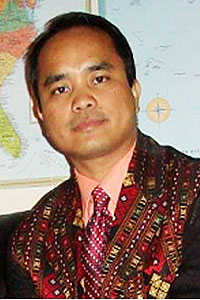The Myanmar government, under Aung San Suu Kyi, has kicked off a new phase of the peace process with the country's ethnic minorities. On April 27, State Counsellor Aung San Suu Kyi held a meeting with the Joint Monitoring Committee, a body representing the army and eight non-state armed groups that signed the so-called Nationwide Ceasefire Agreement (NCA) last October.
The meeting was the first of its kind since the National League for Democracy (NLD) assumed power on April 1. Probably the most significant development of the meeting was that the state counsellor wanted to convene a "Panglong-style" conference within two months. The NLD leader had publicly voiced her support for holding a Panglong-type conference since the days of her confinement. A few days after her release from house arrest in November 2010, Ms Suu Kyi said, "A second Panglong conference addressing the concerns of the 21st century is needed for national reconciliation." As Myanmar prepares for the Panglong-style conference, there are three important lessons the country needs to learn from the failure of the original Panglong conference: representation, support and cooperation, and constitution.
First, the Panglong conference, held on the eve of the country's independence from Great Britain in 1947, was not attended by representatives of all ethnic nationalities. In fact, the historic Panglong agreement was signed by representatives of only four groups, namely Bama/Burman or Myanma, Chin, Kachin, and Shan. Similarly, although eight armed groups signed the NCA last year, only four ethnic groups (Bama/Burman or Myanma, Chin, Karen and Shan) are represented. Three different organisations represented the Karen people -- Karen National Union, Democratic Karen Benevolent Army, Karen Peace Council.

Aung San Suu Kyi initiates a new phrase of the peace process.
The conference must ensure that all ethnic groups are represented, particularly the two dozen armed groups which did not or were not allowed to sign the NCA. No ethnic group should be given special status or preferential treatment, at least in the early stages of the political dialogue process.
Second, the conference must have the support and cooperation of different political stakeholders. Here I mean to say that the NLD government's peace initiatives should have the backing of the military and political parties of different ethnicities, including those parties in the opposition.
During the Panglong conference, although the then leader General Aung San gave assurance to the frontier people (now called ethnic minorities) that there will be equality of rights in post-independent Burma, many doubted the sincerity of the Burman leaders. The British colonial administration was also concerned that the non-Burman ethnic groups would not be treated equally in the Union of Burma. To allay the fear and suspicion, Aung San said to the frontier leaders, "if Burma receives one kyat, you will also get one kyat."
Third, the conference should focus on amending the existing constitution or drafting a new one that would guarantee equality of rights for all citizens within the structure of federalism.
One fundamental principle of the Panglong agreement, which was incorporated in the 1947 constitution, was the acceptance of autonomy in the internal administration of the frontier areas.
The constitution also guaranteed the frontier people the right to secession after 10 years of the formation of the union. However, the assassination of Aung San in July 1947 shattered the hope of the frontier people. After the death of Aung San, the Burmese army was against granting autonomy in the frontier areas. The army, which Aung San led against the British and Japanese forces, equated autonomy/federalism with disintegration of the union.
Instead of respecting and protecting the constitution, the military staged a coup in 1962 and ruled the country, which subsequently led to the rise of the insurgency movement. The military then suppressed the country's ethnic minorities.
As Aung San Suu Kyi, the daughter of Aung San, leads this 21st century Panglong-style conference, there are high hopes and expectations that the shortcomings of the Panglong conference will be addressed. At the same time, there is also a caveat of another failure should there be a lack of support and cooperation from leaders of all major political stakeholders, including the military. Given the reemergence of a ray of hope after five decades of despair, the international community should help Myanmar to achieve peace and stability, which will be beneficial for all.
Nehginpao Kipgen, PhD, is Assistant Professor and Executive Director of Centre for Southeast Asian Studies, Jindal School of International Affairs, OP Jindal Global University. He is the author of three books, including 'Democratisation of Myanmar'.
